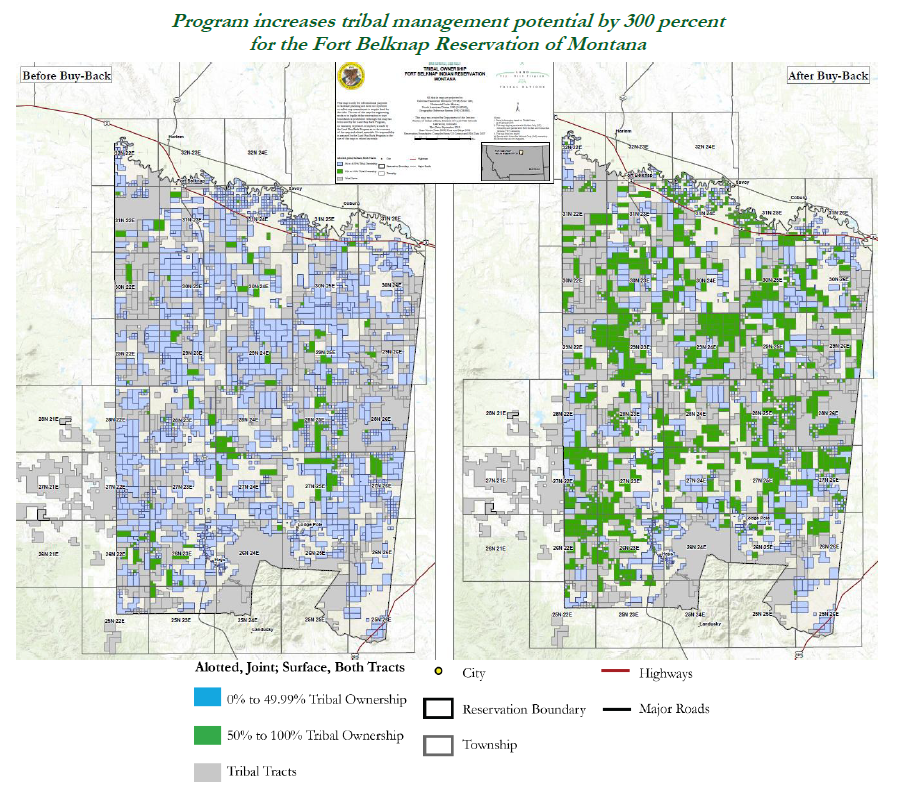In December of 2009, the Cobell v. Salazar court case was settled (commonly referred to as the Cobell Settlement). A key part of the Cobell settlement involved a program to help reduce the fractionalized ownership of individual parcels of land on American Indian Reservations. Tribal land is often owned by dozens or even hundreds individuals who each own a very small percentage of the tract of land. This makes leasing or developing the land challenging. As part of the settlement the federal government agreed to make offers to purchase these fractionalized ownership interests. Each current landowner could then accept or reject the offer to purchase their share of ownership in a parcel of land. Any ownership interests purchased by this program would be then turned over the tribal government where the land is located.
As of September of 2016, over $900 million dollars of the $1,550 million agreed upon in the court settlement had been used to purchase fractionalized land holdings. The $900 million has purchased portions of 30,000 tracts of land from 45,600 different owners. The accepted offers represent over 1.8 million acres nationally. 1,200 of these tracts of land are now 100% owned by the local tribal government. The program has made offers and payments to landowners on 26 reservations with more to follow.
Owners of land located on the Fort Belknap, Crow, Fort Peck, Northern Cheyenne and Flathead reservations have all participated in the program. Owners of land on the Blackfeet Reservation are or will be receiving offers in this year. This program will not include land on the Rocky Boy Reservation due to the lack of individual trust land. The landowners on the five reservations in Montana that have completed the program received payments of over $281 million for the equivalent of nearly 690,000 acres of land. The average payment was per acre was $408. The 690,000 acres of land represents approximately 10% of the total land area of the five reservations. This graphic from the 2016 Program Status Report shows the impact on landownership on the Fort Belknap Reservation.
Fort Belknap Land Ownership

Nationally 63% of land parcels that were involved in this program had been generating no income. Over 95% of this land is classified as agricultural. It is expected that more of this land will generate income after the consolidation because the process to lease the land will be simpler with fewer owners. The reduced difficulty of the leasing process will likely put more of this land into productive agricultural uses.
Current information on this program can be found here.

